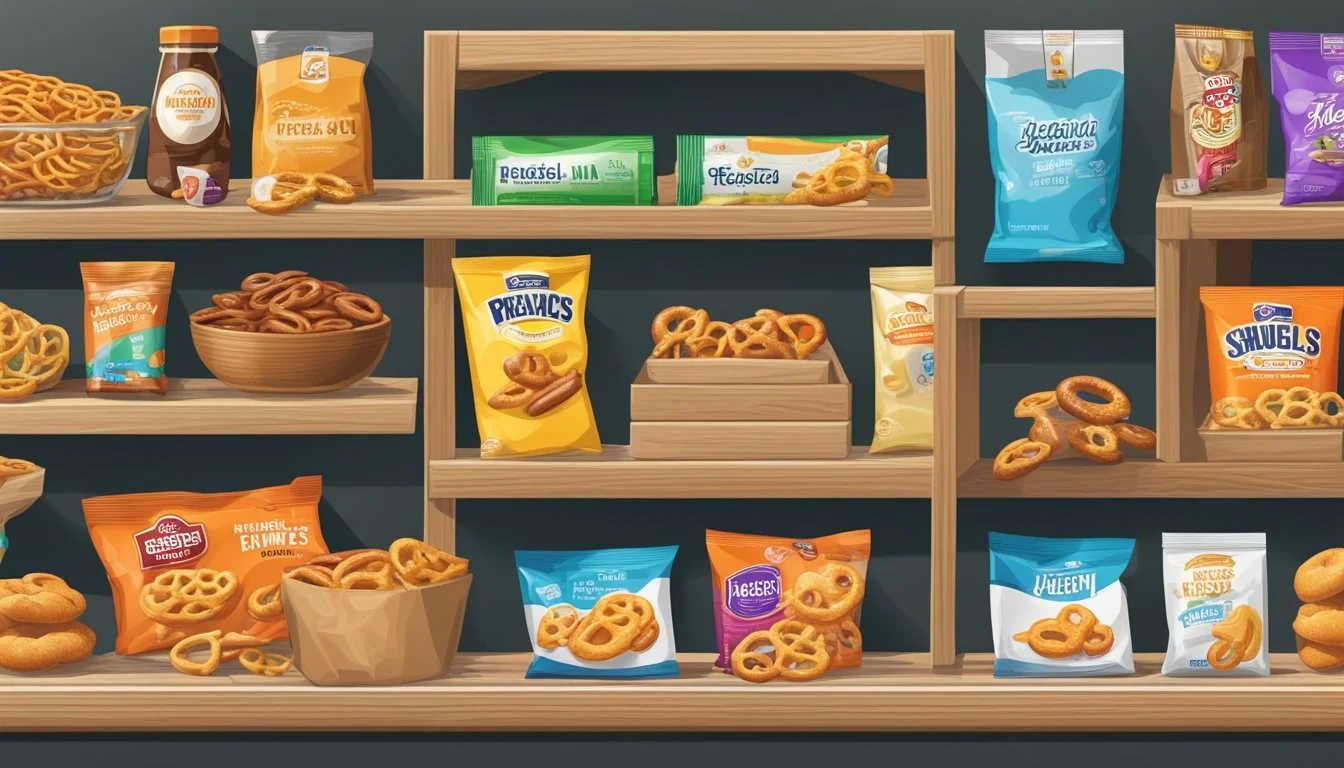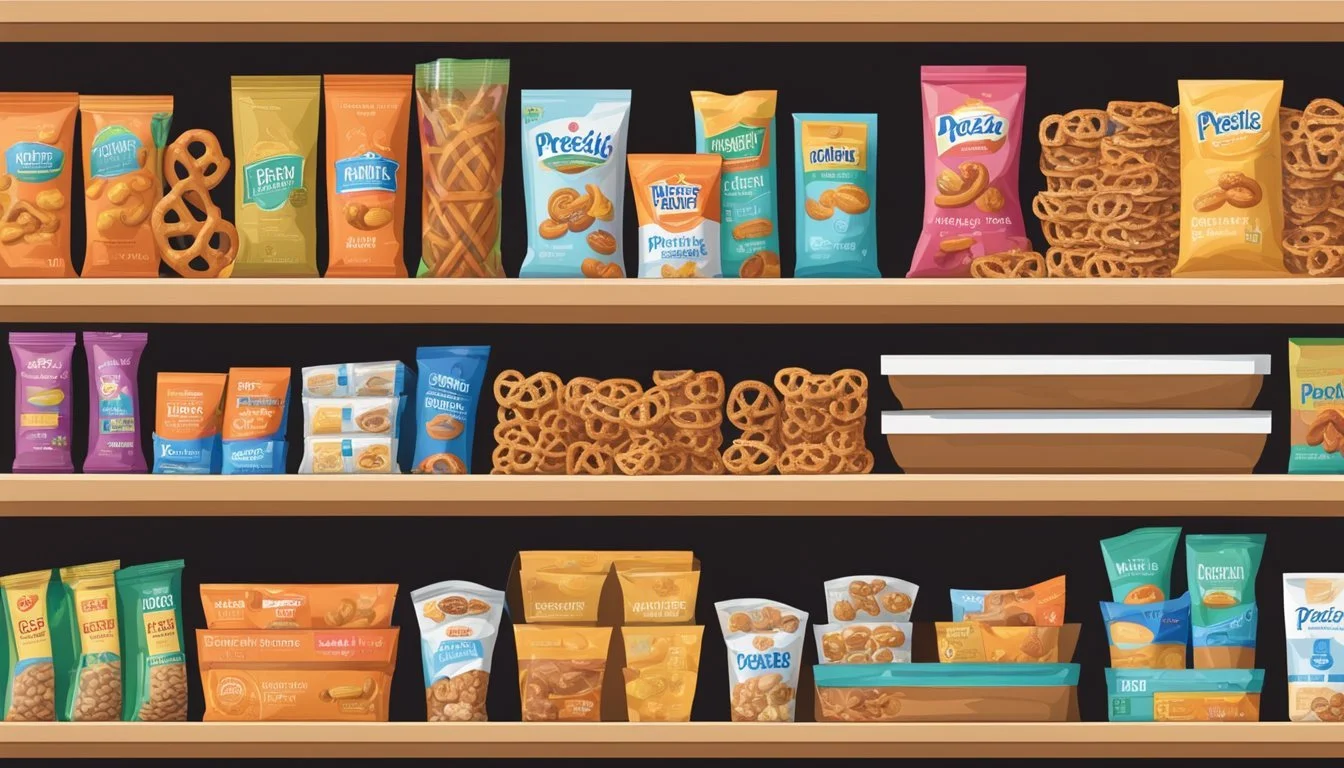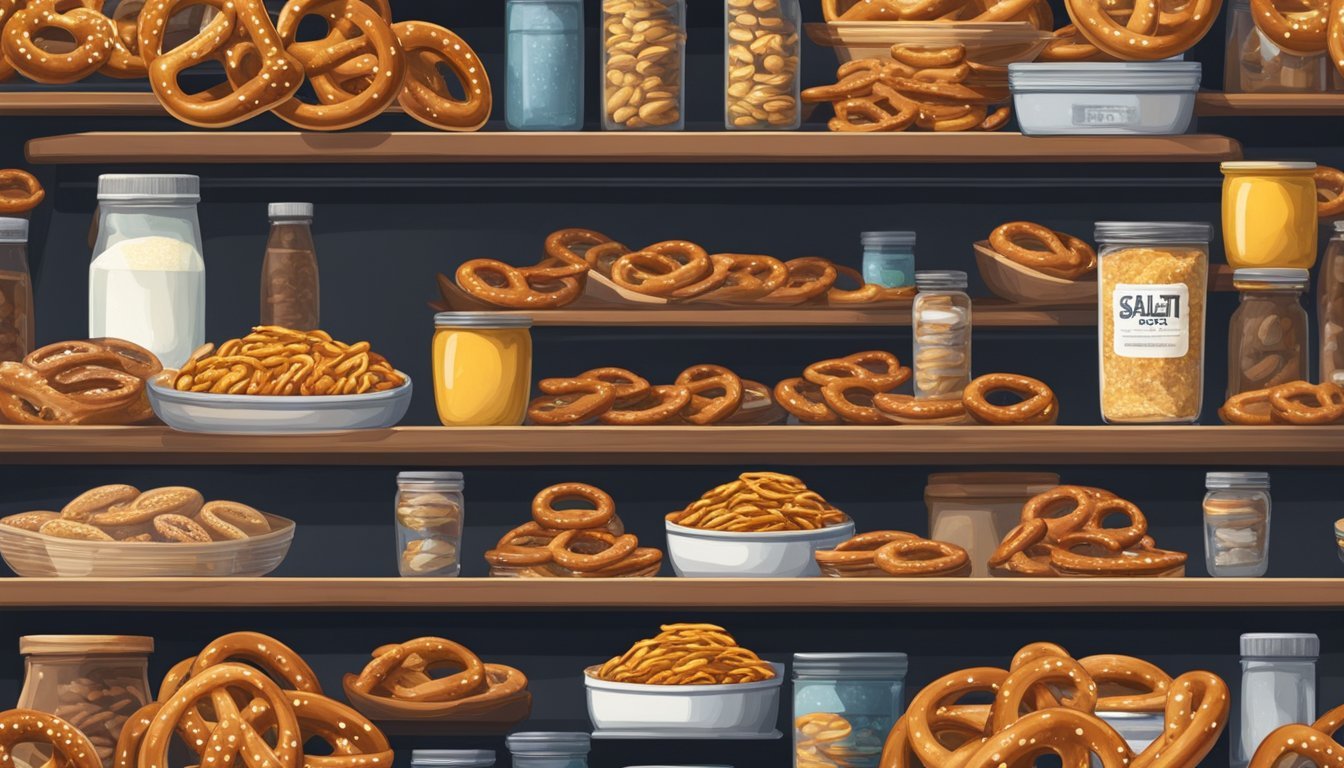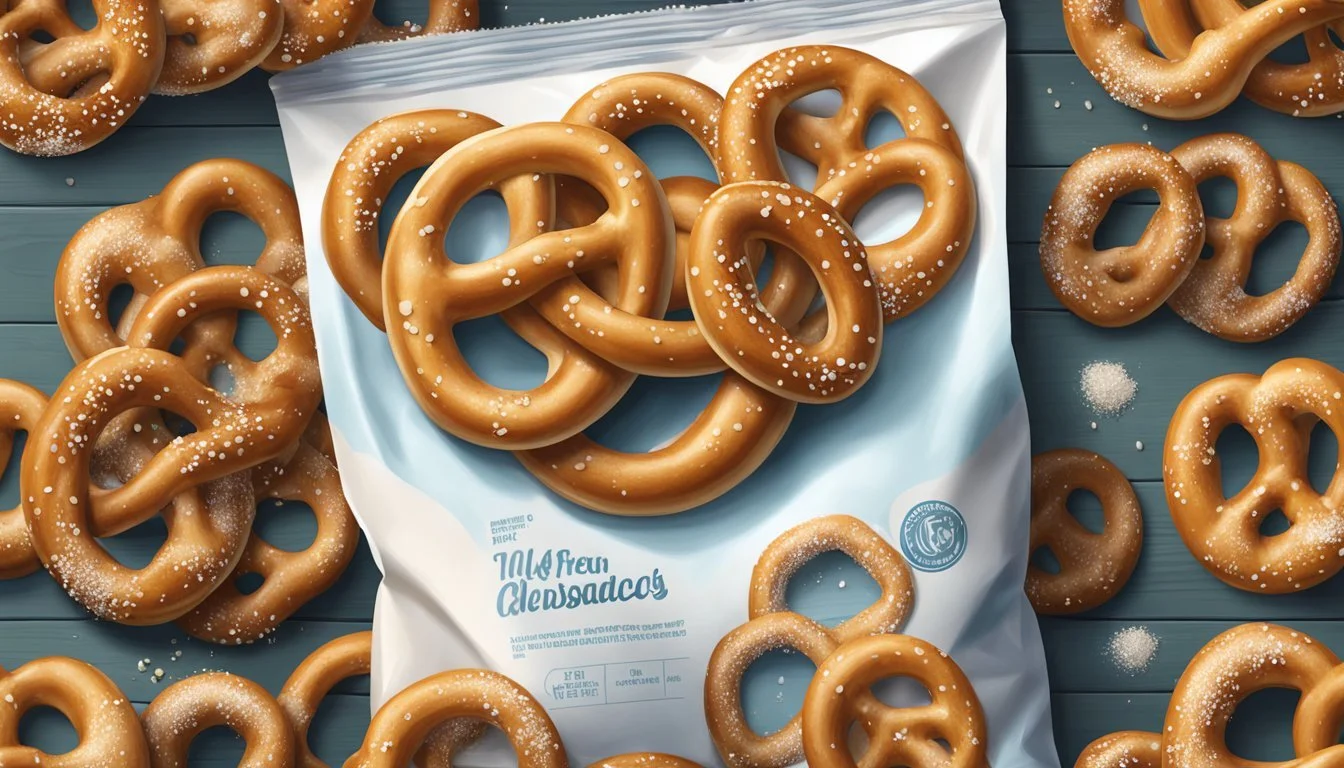Do Pretzels Go Bad?
Understanding Shelf Life and Storage Tips
Pretzels, a beloved snack enjoyed by many around the world, do have a shelf life that varies depending on whether they are hard or soft. Hard pretzels generally last longer, often staying fresh for months if kept in airtight packaging. In contrast, soft pretzels need to be consumed much sooner, often within a couple of days, to maintain their quality.
Yes, pretzels do go bad, and how quickly this happens depends largely on their type and storage method. Soft pretzels are particularly susceptible to spoilage due to their higher moisture content, making proper storage crucial. They tend to offer the best texture and flavor within the first 12 hours and should be frozen if you intend to keep them for longer.
Proper storage can extend the life of hard pretzels, typically allowing them to stay fresh for weeks after opening. Unopened, they can last even longer, up to 6-9 months. Keeping them free from moisture is key to preventing mold growth and maintaining their crunch. Understanding these details can help you enjoy your pretzels at their best.
Understanding Pretzels
There are various types of pretzels, each with unique characteristics. Additionally, the ingredients used in pretzel-making play a crucial role in determining their texture and flavor.
Types of Pretzels
Hard Pretzels: These are the crunchy versions that can stay fresh for 6-9 months if unopened. They come in various shapes like sticks, rods, and knots.
Soft Pretzels: Soft pretzels are larger, doughier, and must be consumed within 24 hours if kept at room temperature. They are often associated with street vendors and fairs. Wrapping them in cling film and foil can extend their freshness up to a month if frozen.
Flavored Pretzels: These include pretzels that are seasoned with additional ingredients like cheese, garlic, or cinnamon sugar. Flavored options add a twist to the traditional taste and come in both hard and soft varieties.
Common Ingredients
Flour: The main ingredient, it gives pretzels their structure.
Yeast: Essential for soft pretzels, it helps the dough rise and creates a fluffy texture.
Salt: Commonly sprinkled on top, it enhances flavor. Coarse salt is often used for its ability to stick to the dough.
Oil: Used to create a smoother dough and prevent sticking during baking.
Sugar: Added in small amounts, it feeds the yeast for fermentation.
Fat: Ingredients like butter may be added to enrich the dough.
Fiber: Some pretzels incorporate whole grains or seeds to increase fiber content.
These ingredients work together to create the distinctive taste and texture associated with different types of pretzels.
Shelf Life Basics
Pretzels, both soft and hard, have different shelf lives and signs that indicate they are no longer good to eat. Proper storage can extend their shelf life and maintain quality.
Manufacturer's Estimate
Manufacturers provide estimates on the shelf life of pretzels, typically indicated by an expiration date or best by date.
For soft pretzels, the suggested shelf life is short, often just 2-3 days when stored at room temperature. To maintain peak quality, they should be consumed within the first 12 hours. Freezing can extend their freshness up to a month.
Hard pretzels, on the other hand, have a longer shelf life. When unopened, they maintain quality for about 6 to 9 months. If opened, they stay fresh for about 1-2 weeks in an airtight container. It’s important to store them in a cool, dry place to prevent moisture absorption.
Signs of a Bad Pretzel
Signs that pretzels have gone bad differ between soft and hard varieties.
For soft pretzels, watch for staleness, mold, and an off smell. If a soft pretzel is dry, hard, or moldy, it should be discarded immediately.
Hard pretzels can become stale or develop mold over time, especially if exposed to moisture. A stale pretzel loses its crunch and may taste bland. Mold appears as spots or fuzz on the surface. Consumption of expired pretzels, especially if moldy, can lead to food poisoning.
Maintaining pretzel quality involves proper storage and paying attention to these signs.
Storage Solutions
Proper storage is essential to maintain the freshness and quality of pretzels. The methods differ for soft and hard pretzels, but both require attention to moisture and temperature.
Optimal Conditions
Hard pretzels should be stored in a cool, dry place to preserve their crunch and flavor. An airtight container is ideal to prevent exposure to humidity and moisture, which can make them stale or cause them to absorb odors from other foods.
It's best to keep them in a pantry or cupboard away from direct sunlight. Refrigeration is not necessary as long as they are kept sealed properly.
Special Considerations for Soft Pretzels
Soft pretzels, with a shorter shelf life, require different care. They should be refrigerated if not consumed within 2-3 days. Place them in an airtight container or wrap them in plastic wrap to avoid moisture absorption and to maintain their softness.
For longer storage, consider freezing soft pretzels. They can last up to a month in the freezer when properly packaged. Let them thaw at room temperature before reheating to enjoy their chewy texture.
Keep the pretzels away from direct sunlight and high humidity environments to prevent rapid deterioration.
Recognizing Spoilage
Spoiled pretzels can pose health risks and are often identifiable through specific signs. This section focuses on the visual and textural indicators of spoilage and the potential health implications of consuming spoiled pretzels.
Visual and Textural Clues
The first signs of spoilage are often visual. Color change is a common indicator. Mold growth on pretzels is a clear sign that they have gone bad. Mold might appear as white, green, or blue patches.
Texture also offers important clues. Soft pretzels that are no longer fresh will lose their softness and become hard. Hard pretzels, on the other hand, might become chewy or lose their crispness, indicating staleness.
Additionally, any unusual odor should be a red flag. Fresh pretzels have a distinct, pleasant smell, whereas spoiled ones may smell off or sour.
Health Implications
Consuming spoiled pretzels can lead to food poisoning. Mold on pretzels can produce mycotoxins, which are harmful if ingested. Symptoms of food poisoning include nausea, vomiting, and diarrhea.
While it is rare for expired pretzels to cause serious illness, the risk of food poisoning increases if the pretzels show visible signs of spoilage. It is always best to err on the side of caution and discard any questionable pretzels.
Recognizing these signs can help prevent potential health issues and ensure that only fresh, safe pretzels are consumed.
Maximizing Freshness
Proper storage techniques can significantly extend the freshness of pretzels. Different methods apply depending on whether the pretzels are intended for immediate use or long-term storage. Adhering to specific dos and don'ts helps maintain optimal flavor and prevent staleness.
Immediate Use vs. Long-Term Storage
For immediate use, soft pretzels are best consumed within 24 hours. Store them at room temperature, tightly wrapped in plastic wrap or foil to maintain their texture.
For long-term storage, hard pretzels are ideal. Unopened packages can remain fresh for 6 to 9 months when stored in a cool, dry area. Opened hard pretzels should be sealed in airtight containers to prevent moisture infiltration and staleness.
Freezing is also an option. Soft pretzels can be wrapped in plastic cling and foil before being placed in the freezer. This keeps them fresh for up to a month. Avoiding freezer burn is crucial, so ensure that the packaging is airtight.
Do's and Don'ts
Do's:
Store unopened pretzels in a cool, dry area.
Use airtight containers or resealable bags for opened pretzels.
Wrap soft pretzels in both plastic wrap and foil for freezing.
Regularly check packaging for integrity to ensure freshness.
Label frozen pretzels with dates to track storage time.
Don'ts:
Do not leave soft pretzels exposed to air; it accelerates staleness.
Avoid storing pretzels in humid places; moisture contributes to spoilage.
Do not freeze pretzels without proper wrapping; it can cause freezer burn and diminish flavor.
Avoid storing pretzels near strong-smelling foods; they can absorb odors.
Following these simple guidelines helps in keeping pretzels fresh, flavorful, and safe to eat. Proper storage and handling are key to maximizing the shelf life of both soft and hard pretzels.
Handling and Serving
For optimal taste and texture, soft pretzels should be properly prepared and served with suitable accompaniments.
Preparation for Serving
Before serving, soft pretzels must be heated correctly. If they were stored at room temperature, wrapping them tightly in foil and warming them in an oven at 350°F for about 10 minutes can restore their softness.
For frozen pretzels, allow them to thaw at room temperature for a few hours, then follow the same heating instructions. Do not microwave them, as this can make the pretzels chewy instead of soft.
When serving hard pretzels, ensure they are stored in airtight containers to maintain crispiness. Check for any signs of staleness, and discard pretzels if they exhibit an off smell or taste.
Suggested Accompaniments
Pretzels pair well with a variety of dipping sauces and toppings. Mustard is a traditional favorite, ranging from spicy brown to honey mustard, providing a tangy contrast to the pretzels' saltiness. Cheese sauces, especially warm and gooey ones, are also popular choices.
For a sweeter option, yogurt dips or chocolate sauces can be delightful. For beverages, tea and coffee make excellent companions to pretzels, balancing their flavors.
Consider adding nuts as a side snack, complementing the crunchy texture of hard pretzels. For an additional twist, toppings like sesame seeds, poppy seeds, or coarse sea salt can enhance the pretzel experience even further.
Beyond the Pantry
Beyond home storage, pretzels can be a convenient snack option for travel and various settings, including theme parks and kids' activities.
Travel and On-the-Go Snacking
When traveling, whether by car, plane, or train, pretzels offer a portable and mess-free option. Hard pretzels like sticks and chips come in resealable bags, making them ideal for easy access and long-lasting freshness.
For shorter trips, pretzel bites can be a quick, satisfying snack to curb hunger. They are compact and provide a balance of carbohydrates and salt, which can be especially useful for maintaining energy levels during travel.
Pretzels in Different Settings
Theme parks and similar venues often sell pretzel bites and sticks due to their popularity and ease of consumption. They are sturdy, easily carried without extra packaging, and less likely to cause spills, making them kid-friendly.
In school settings or during kids' extracurricular activities, pretzels are a favorite due to their crunchy texture and taste. Pretzel chips offer a variation that can be paired with dips or spreads, adding versatility to snack time.
Whether in a theme park, at a school event, or on the move, the reliability and convenience of pretzels make them an excellent choice for various environments.
Common Questions
Understanding the longevity of pretzels can help in maximizing their enjoyment. This depends on whether they are soft or hard, and whether preservatives are used.
Estimated Storage Times
Soft pretzels typically last around 2-3 days at room temperature for optimal texture and flavor. For best results, consume them within the first 12 hours. When wrapped in plastic and aluminum foil, they can be frozen for up to a month.
Hard pretzels, especially unopened, can last until their expiration date, usually several months. They are more shelf-stable due to lower moisture content. Once opened, keeping them in an airtight container can maintain their crunchiness for an extended period.
Type Storage Method Duration Soft Room Temperature 2-3 days Soft Frozen Up to a month Hard Unopened Until expiration date Hard Opened, Airtight Container Several weeks
Impact of Preservatives
Preservatives can significantly extend the shelf life of pretzels. Many commercially available hard pretzels contain preservatives that help them last for months. These additives prevent spoilage and maintain texture over time.
Soft pretzels, often homemade or fresh from bakeries, usually lack these preservatives. As a result, they spoil more quickly unless frozen. When selecting pretzels, checking for preservatives in the ingredients list can provide an indication of how long they will remain fresh.
For health-conscious consumers, opting for preservative-free options might be preferable, but these will require more immediate consumption or proper storage methods.










